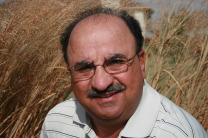AMES, Iowa – An Iowa State University agronomist is urging Iowa farmers to reconsider tilling their fields after harvest as part of a long-term approach to preserving the health of their soil.
As harvest winds down this year, Mahdi Al-Kaisi, a professor of agronomy, said a large portion of farmers will till their fields in an effort to realize perceived benefits like loosening up soil compaction.
But many of those perceived benefits never materialize or aren’t worth the increased cost and effort that tillage requires, Al-Kaisi said. In fact, in virtually all cases, tillage causes long-term damage to fields by accelerating the loss of soil through erosion, he said.
“Tillage is a quick fix but it does long-term damage to soil,” Al-Kaisi said. “There’s no real scientific justification for tilling a field after harvest.”
He said many farmers have the misconception that tilling will mix the leftover crop residue on a field’s surface into the soil and speed up decomposition of the plant residue and enrich the soil. Not true, Al-Kaisi said. Studies show tillage has no significant impact on the speed at which leftover residue breaks down, he said.
Researchers have shown conclusively that tilling fields after harvest disrupts the structure of soil, which increases surface runoff and the loss of organic matter in the soil. That deteriorates the soil quality and makes it more difficult for plants to establish themselves, he said.
“Tillage hinders the creation of a healthy soil environment and microbial community, which causes the potential for a reduction in productivity,” he said.
Al-Kaisi recommended several alternatives that could help farmers take better care of their soil. Going no-till eliminates the costs associated with conventional tillage and preserves soil health, he said. In addition, conventional tillage can burn 3.5 gallons of fuel per acre, which adds up quickly. Instead, farmers can invest in residue cleaners, or devices installed on the front end of planters that move crop residue out of the way during planting.
Or, instead of tilling entire fields, farmers can reap some of the rewards simply by tilling narrow, shallow strips, sometimes referred to as strip tillage, especially on relatively flat fields that are poorly drained.
Al-Kaisi urged farmers to adopt a long-term outlook should they choose to switch to no-till or conservation tillage. He said farmers sometimes give up on no-till after a few years without benefitting from an improvement in their soil.
The damage caused by years of tilling won’t heal in a year or two, he said. Instead, it takes between five and seven years before the benefits emerge.
He estimated that 40 percent of cropland in Iowa is in conventional tillage, while only 20 percent is in no-till.
“No-till is a long-term commitment that we need to undertake,” he said. “We need to stop treating soil like dirt.”
